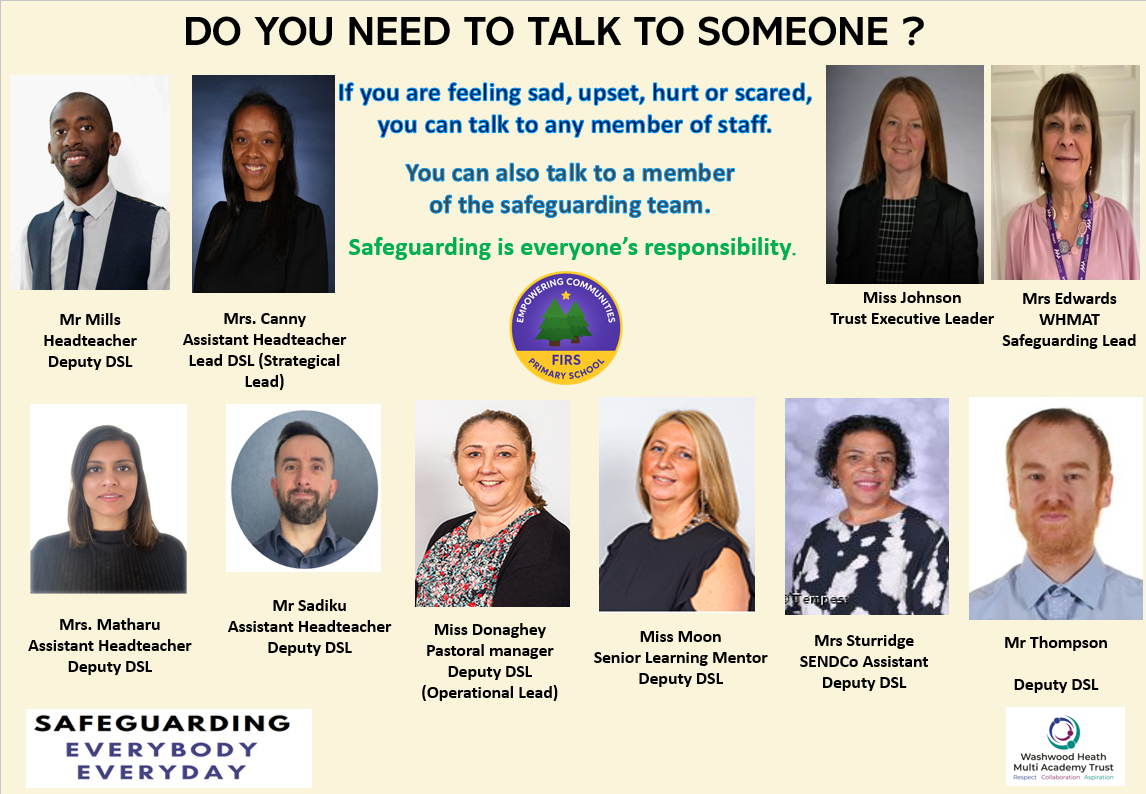- Home
- Key Information
- Safeguarding
Safeguarding
Firs Primary School is committed to safeguarding and promoting the welfare and safety of all children and expects all staff and volunteers to share this commitment. We strive to ensure that consistent and effective safeguarding procedures are in place to support families, children and staff.
Firs Primary School has policies and procedures in place to deal effectively with child protection and safeguarding issues, which include tackling radicalisation and extremism, together with recording and monitoring processes using CPOMS.
To promote a safe environment for children, Firs Primary School employs a strict selection and recruitment policy which includes all statutory checks on staff and regular volunteers including Enhanced DBS (disclosure and barring service) checks.
Safeguarding training is attended by all staff and relevant governors; training is monitored and comprehensive records kept by the DSL.
All concerns are passed through members of staff who are trained as Designated Safeguarding Leaders. Staff are required to report any causes of concern to the school safeguarding team, all referrals are logged and monitored to make sure that they are followed up appropriately.
Attendance of children is monitored closely and concerns shared as appropriate with parents/carers. Firs Primary School works effectively with other agencies and parents/carers when necessary to safeguard young people.
If you have any serious concerns about your child, another child or a member of staff at Firs Primary School please do not hesitate to contact one of the Designated Safeguarding Leads (see poster below) who will be able to provide you with the best advice and help using the appropriate degree of confidentiality.

Lead DSL – Mrs C Canny
Deputy DSL - Miss Donaghey
WHMAT Safeguarding Leader - Mrs A Edwards
Safeguarding and Child Protection Policy
What is the difference between the terms safeguarding and child protection?
In practice, Safeguarding is the policies and practices that schools and Governing Bodies put in place to keep children safe and promote their well-being. This includes everything from the security of the buildings and environment, to the safe recruitment of staff and everything in between.
Child Protection is a term used to describe the activity that is undertaken to protect a specific child or children, who are suffering or liable to suffer significant harm.
Working together – what children say.
What children have said they need regarding safeguarding:
- Vigilance; to have adults notice when things are troubling them.
- Understanding and action; to understand what is happening, to be heard and understood and to have that understanding acted upon.
- Stability; to be able to develop an ongoing stable relationship of trust with those helping them.
- Respect; to be treated with the expectation that they are competent rather than not.
- Information and engagement; to be informed about and involved in procedures, decisions, concerns and plans.
- Explanation; to be informed of the outcome of assessments and decisions and reasons when their views have not been met with a positive response.
- Support; to be provided with support in their own right.
- Advocacy; to be protected with advocacy to assist them in putting forward their views.
- Protection; to be protected against all forms of abuse and discrimination and the right to special protection and help.
Links to additional information about safeguarding issues and forms of abuse:
Please click on the links below for further information - operation encompass:
WHMAT Safeguarding and Child Protection Policy 2025.pdf
Keeping Children Safe in Education from 1 September 2025.pdf
